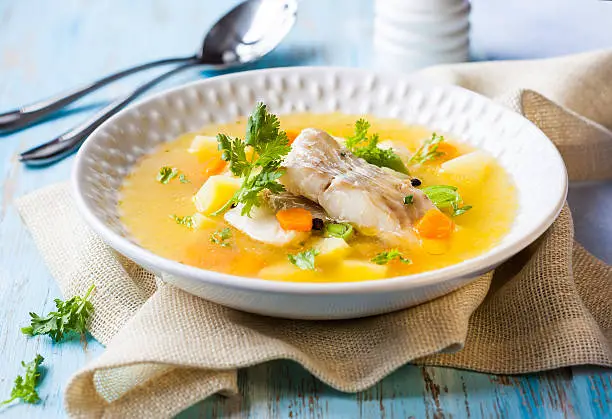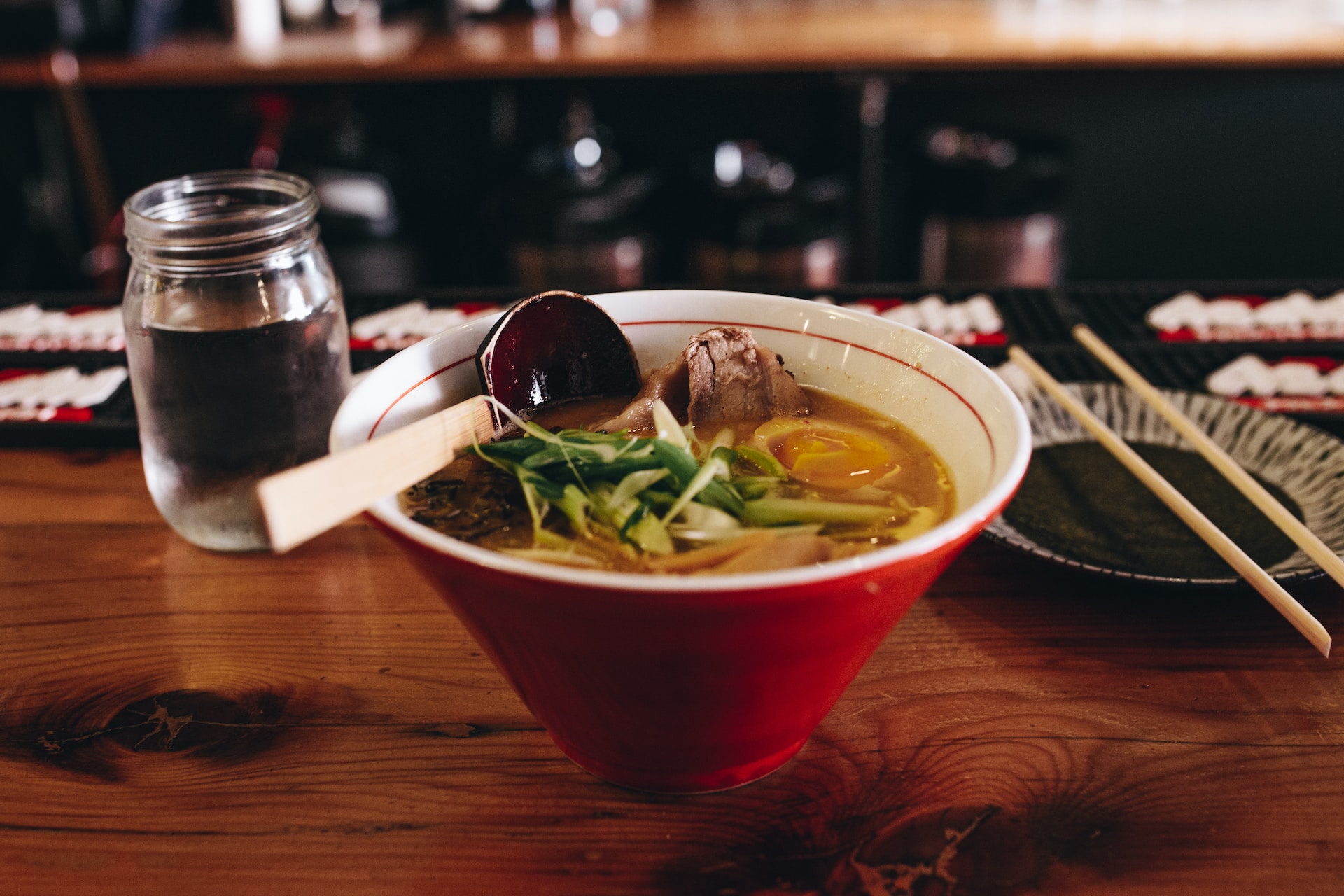Indonesia, a country known for its rich and diverse culinary heritage, offers a delightful array of flavors that tantalize the taste buds of food enthusiasts worldwide. One such gem in Indonesian cuisine is Papeda, a traditional dish hailing from the eastern region of the archipelago. Papeda is a unique and exotic dish, cherished for its simplicity and distinct flavors. In this article, we will delve into the world of Papeda, exploring its history, ingredients, preparation methods, and the cultural significance it holds in Indonesia.
The Origins of Papeda
Papeda is a traditional dish primarily associated with the Moluccas, a group of islands located in eastern Indonesia. These islands are renowned for their lush natural beauty and rich cultural heritage, making them a treasure trove for food enthusiasts and cultural explorers alike.
The word “Papeda” itself has roots in the Moluccan language and has been passed down through generations. Historically, Papeda was a staple food among the indigenous people of the Moluccas, particularly the Ambonese and Seram Islanders. It is believed to have been consumed for centuries, dating back to the time when the Moluccas were the epicenter of the global spice trade.
Ingredients That Make Papeda Special
Papeda is known for its simple yet distinct ingredients. The dish primarily revolves around two main components: sago starch and water. Sago starch is derived from the pith of various palm trees, predominantly the sago palm (Metroxylon sagu). This starch is the heart and soul of Papeda, and its unique texture is what gives the dish its character.
To make Papeda, you will need:
Sago Starch: Obtained from the sago palm tree, this starch is the key ingredient. It is typically sold in the form of pearls or granules.
Water: Purified water is used to create the starch-water mixture.
Banana Leaves: Banana leaves are used for serving and enhancing the overall experience. They add a subtle earthy aroma to the dish.
Optional seasonings may include a pinch of salt or a squeeze of lime juice, although traditional Papeda is usually consumed without any flavorings.
The Preparation Process
Preparing Papeda requires patience and precision, as the simplicity of the dish demands careful attention to detail. Here’s a step-by-step guide to making this traditional Indonesian delicacy:
Prepare the Sago Starch: Begin by mixing the sago starch with cold water in a large bowl. Use a 1:4 ratio of sago starch to water. Stir the mixture thoroughly until it forms a thick paste, ensuring there are no lumps. Allow it to rest for about 15 minutes.
Knead and Extract Starch: After resting, knead the sago mixture using your hands or a strainer to extract the starchy liquid. This process separates the sago starch from any remaining impurities or fibers.
Strain and Collect the Starch: Strain the starchy liquid through a fine mesh strainer or cheesecloth into another bowl. This step helps remove any remaining solids and ensures a smooth, silky texture for the Papeda.
Cook the Starch: Transfer the collected sago starch to a large pot. Heat it over low to medium heat while constantly stirring. Continue cooking and stirring until the starch transforms into a translucent, jelly-like consistency. This may take anywhere from 30 minutes to an hour, depending on the quantity and quality of the starch.
Serve with Banana Leaves: To serve Papeda traditionally, place a portion of the cooked starch onto a banana leaf. Use your fingers to tear off small pieces and dip them into a flavorful side dish or sauce.
Cultural Significance
Papeda holds a special place in the cultural heritage of the Moluccas and eastern Indonesia. It is not just a dish but a symbol of tradition, identity, and connection to the land. Here are some aspects of the cultural significance of Papeda:
Culinary Heritage: Papeda is a testament to the resourcefulness and resilience of the indigenous people of the Moluccas. It has been prepared and enjoyed for generations, showcasing the rich culinary heritage of the region.
Traditional Gatherings: Papeda is often served during special occasions and gatherings, such as weddings, festivals, and family reunions. It brings people together and strengthens social bonds.
Respect for Nature: The process of extracting sago starch from palm trees is deeply intertwined with the respect and reverence the indigenous communities have for their natural surroundings. It emphasizes sustainability and harmony with nature.
Cultural Preservation: As traditional recipes like Papeda face the challenges of modernization and changing dietary preferences, efforts are made to preserve and promote these cultural treasures. Cultural festivals and culinary events help keep the tradition alive.
Variations and Accompaniments
While the basic recipe for Papeda remains relatively consistent, there are regional variations and accompaniments that add depth and diversity to the dish. Here are some common variations and side dishes enjoyed with Papeda:
Kohu-Kohu: A popular accompaniment to Papeda is Kohu-Kohu, a condiment made from grated coconut, lime leaves, and sambal (spicy chili paste). It adds a burst of flavor and texture to the otherwise neutral Papeda.
Fish or Seafood: Grilled or steamed fish, particularly mackerel or skipjack tuna, is often served alongside Papeda. The combination of the starchy Papeda and the fresh, flavorful fish creates a harmonious contrast.
Lemon Basil Sauce: A tangy and herbaceous sauce made from lemon basil leaves, lime juice, garlic, and chilies complements the simplicity of Papeda. It adds a refreshing and aromatic element to the dish.
Sambal: Many Indonesians enjoy Papeda with various sambal (spicy condiments) made from chili peppers, shallots, and other ingredients. The level of spiciness can be adjusted to suit individual preferences.
Papeda is a remarkable and ancient Indonesian dish that represents the cultural and culinary diversity of the country. Its simplicity and reliance on natural ingredients reflect the resourcefulness of the indigenous people of the Moluccas. While it may not be as widely known as some other Indonesian dishes, Papeda holds a special place in the hearts and palates of those who have had the privilege of tasting it.
As we explore the world of Papeda, from its origins and ingredients to its preparation and cultural significance, we gain a deeper appreciation for the rich tapestry of Indonesian cuisine. Papeda reminds us that the most cherished culinary treasures often come from the simplest of ingredients and the deepest of traditions, making it a dish truly worth savoring and preserving for generations to come.
A Culinary Adventure
For those interested in experiencing the unique flavors of Papeda firsthand, embarking on a culinary adventure in Indonesia’s Moluccas region is a must. The journey not only allows you to taste the authentic Papeda but also provides an opportunity to immerse yourself in the local culture and witness the traditional methods of sago starch extraction and preparation.
Here are some tips for a memorable Papeda culinary adventure:
Visit Local Markets: Explore the bustling local markets in Moluccas, such as those in Ambon or Seram. Here, you can purchase freshly extracted sago starch and other traditional ingredients like Kohu-Kohu and lemon basil.
Engage with Locals: Strike up conversations with local cooks, vendors, and residents to gain insights into the history and significance of Papeda in their communities. They may even offer to demonstrate the preparation process.
Homestays: Consider staying in a traditional homestay or with a local family during your visit. This immersive experience allows you to partake in cooking sessions, learn about indigenous traditions, and savor homemade Papeda.
Culinary Workshops: Some tour operators and cooking schools in the region offer Papeda cooking workshops. These hands-on classes provide an excellent opportunity to learn the art of Papeda preparation under the guidance of skilled instructors.
Explore the Sago Palm Forests: Take a guided tour of the sago palm forests, where you can witness the harvesting of sago starch firsthand. This excursion allows you to appreciate the sustainable practices employed by local communities.
Modern Interpretations and Innovations
While the traditional Papeda recipe remains at the core of Moluccan cuisine, contemporary chefs and food enthusiasts are embracing innovation to introduce this unique dish to a broader audience. Here are some modern interpretations and innovations of Papeda:
Papeda Fusion Dishes: Chefs around the world are experimenting with Papeda by incorporating it into fusion dishes. For example, Papeda noodles or dumplings are created by blending sago starch with other ingredients to create a new twist on traditional recipes.
Papeda-Inspired Sauces: The texture and simplicity of Papeda can serve as inspiration for innovative sauces in modern cuisine. Chefs are creating silky, sago-starch-based sauces to accompany seafood and other dishes.
Sago Desserts: Sago starch is also used in various desserts, both traditional and contemporary. From sago pudding to sago-based ice creams and tapioca pearls, these desserts showcase the versatility of sago starch in sweet creations.
Health-Conscious Variations: Given the gluten-free nature of sago starch, Papeda and sago-based dishes have found a place in the diets of individuals with dietary restrictions. Health-conscious versions, such as vegan and paleo Papeda, are gaining popularity.
Cultural Exchange: Cultural exchange programs and culinary events are bringing Papeda to international audiences. This fosters cross-cultural understanding and appreciation of Indonesian cuisine.
Papeda, with its rich history, simple yet profound flavors, and cultural significance, embodies the essence of Indonesian culinary heritage. It is a dish that not only nourishes the body but also feeds the soul, connecting people to their roots and traditions.
As we explore the world of Papeda, we uncover the deep respect the Moluccan people have for nature and the sustainable practices they employ to harvest sago starch. Moreover, Papeda reminds us of the importance of preserving and celebrating traditional dishes in an era of rapidly changing food preferences.
Whether you choose to embark on a culinary adventure to the Moluccas or experiment with modern interpretations of Papeda in your own kitchen, you are sure to appreciate the unique and exquisite flavors of this traditional Indonesian dish. Papeda is a testament to the timelessness of culinary traditions, and it invites us to savor the beauty of simplicity in food.


















